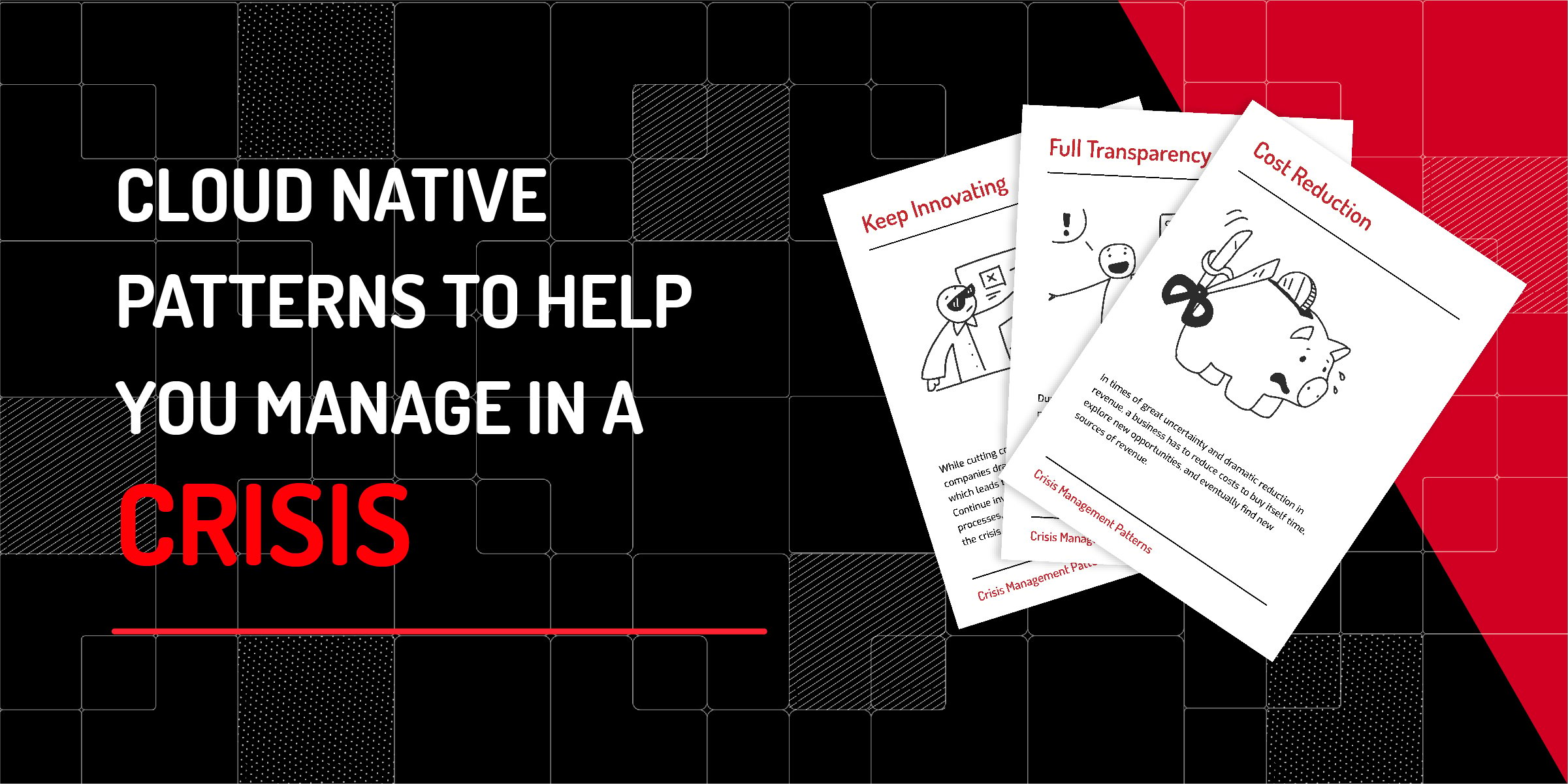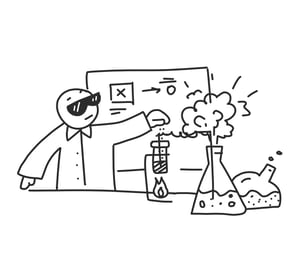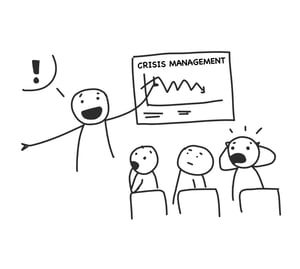There are two types of existential crises.
The first type is slow evolutionary change that involves years of small environmental alterations. The main challenge in such a situation is to overcome resistance among an organisation’s stakeholders and take active steps to change a reasonably comfortable status quo, in order to ensure continued success.
We’ve written a book on the subject that shows how to introduce consistent incremental change while preserving the current business for as long as needed.
You can find the book here: Cloud Native Transformation
The second type of crisis is sudden and dramatic. The world may change overnight. It might be a new and unexpected competitor, a change in regulations, or a worldwide pandemic like we are experiencing now. In such situation there are three major challenges:

We’re now working on a new patterns language for crisis management. In the Cloud Native world, patterns are proven steps you can take and combine to build a strategy.
Fill in the form to get updates.
Here are short examples of the first three patterns:
 Cost Reduction
Cost Reduction
In times of great uncertainty and dramatic reduction in revenue, a business has to reduce costs to buy itself time to explore new opportunities, and eventually find new sources of revenue.

While cutting costs to prolong survival of the business, many companies dramatically reduce innovation or stop it entirely, which leads to difficulties during the recovery from the crisis.
Continue investing in new technologies and improvements in processes, to increase the chances of finding the solutions for the crisis or establishing a better and healthier business.

During the high pressure of dealing with the crisis, the management team is often too busy to update the rest of the team and involve them in creation of the solutions. This leads to a decrease in motivation and lack of support of the leadership team by the rest of the company. Full disclosure of information and frequent updates help to keep people committed to the success of the business.